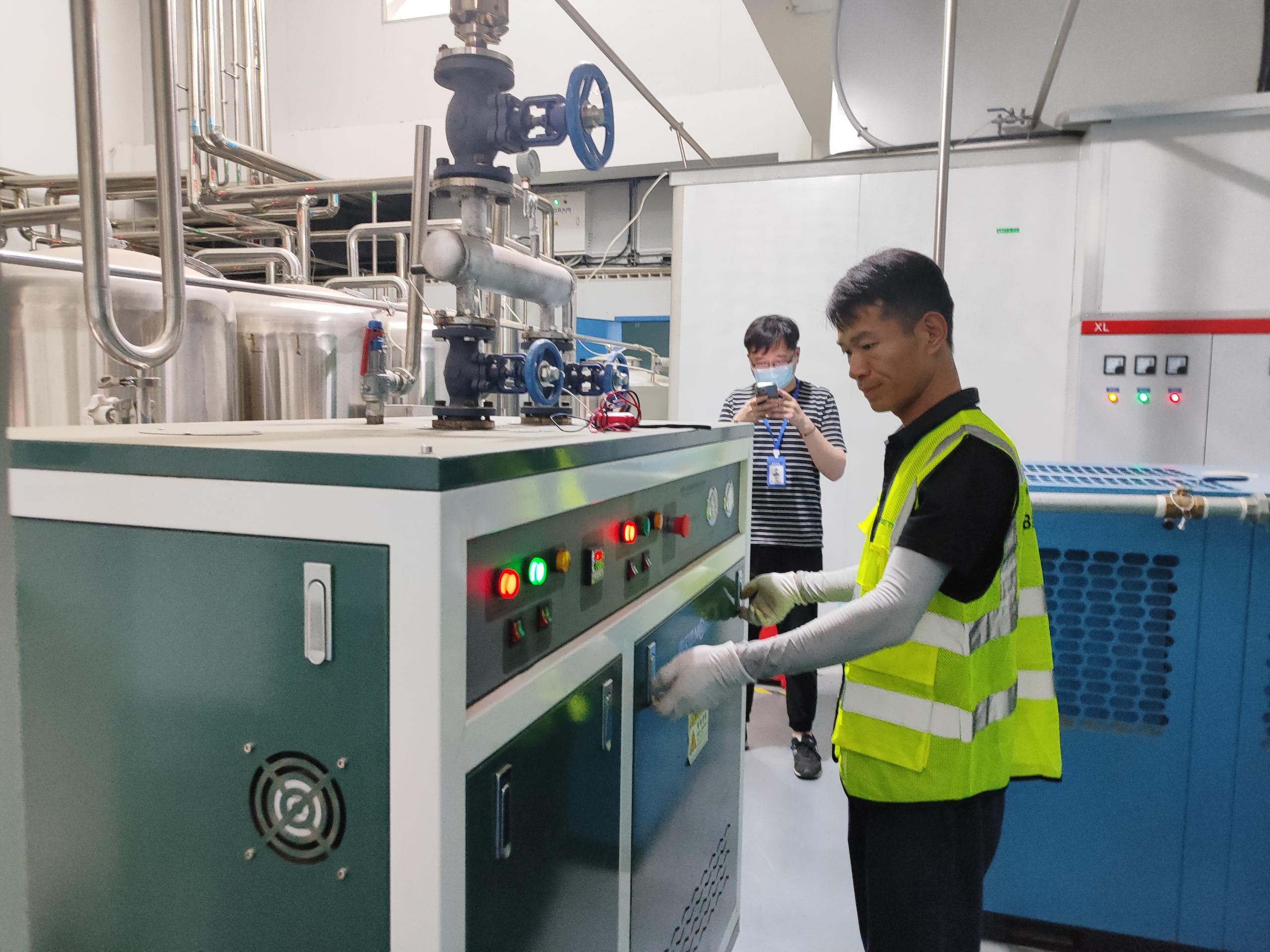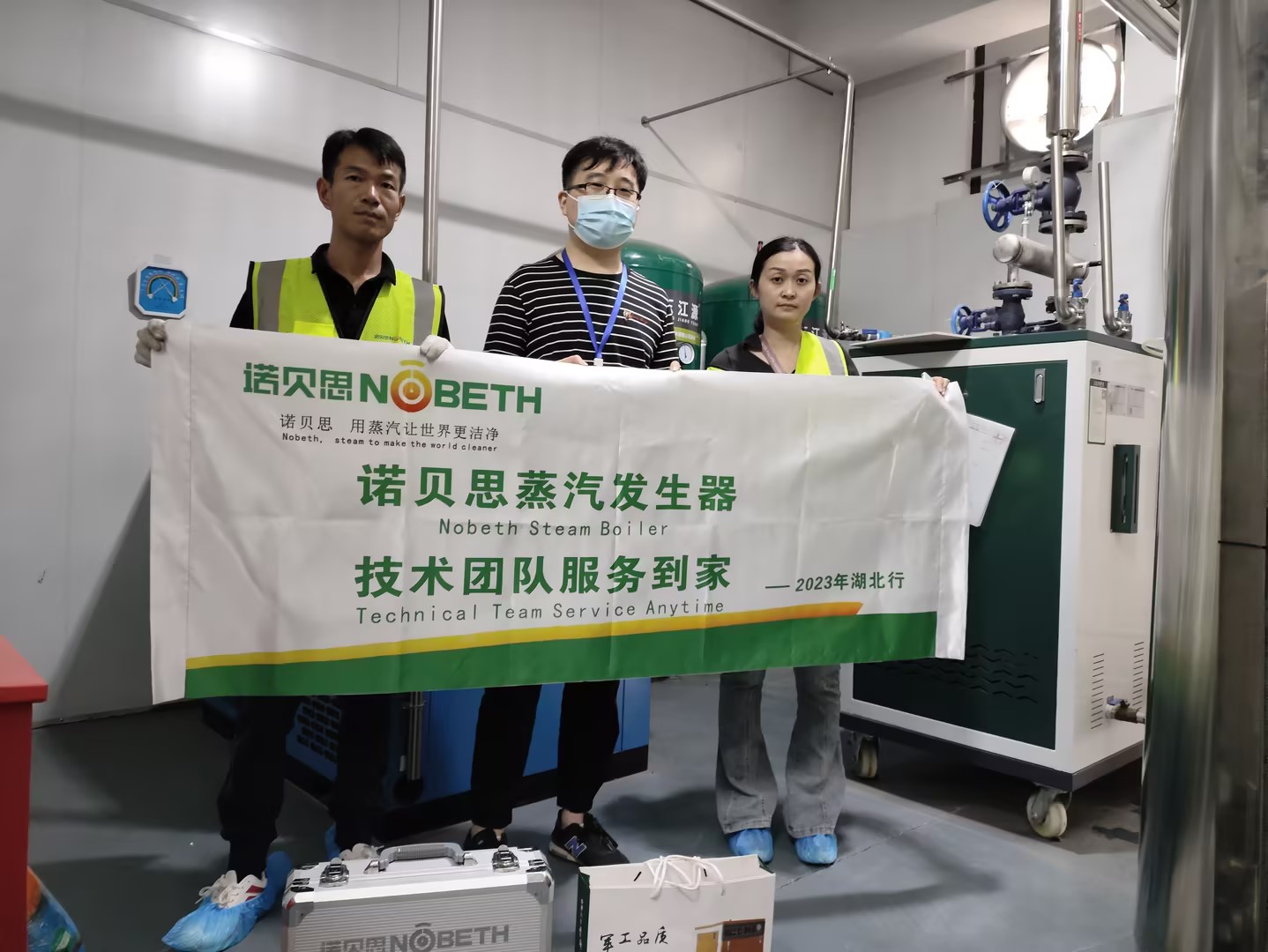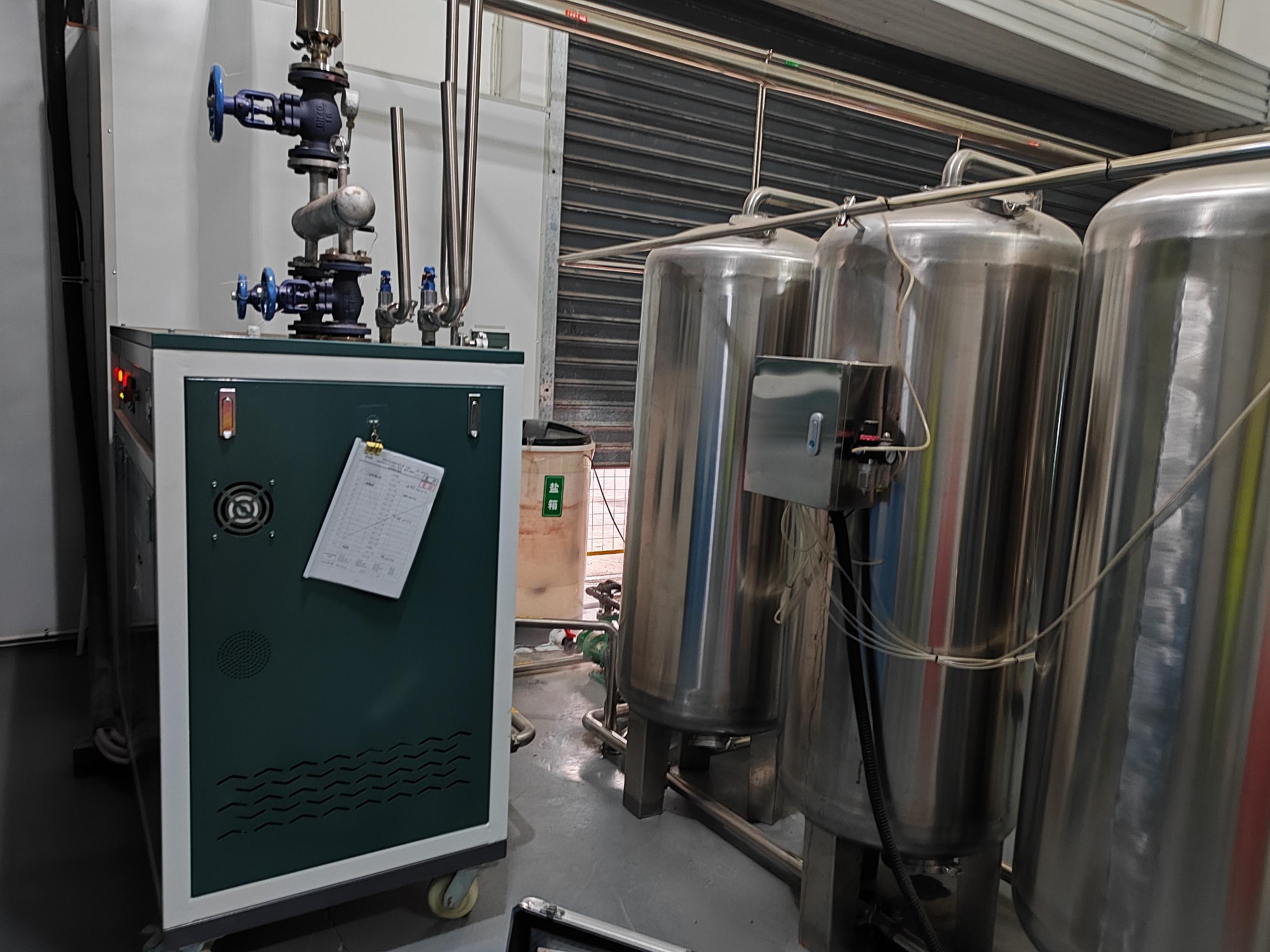Fuel gas steam generator
Clean steam generator distillation tank steam generator fast delivery
Introduction to fuel gas steam generator
1. Definition
As the name suggests, a fuel-fired steam generator is a mechanical device that uses diesel to heat water into hot water or steam; a gas-fired steam generator is a mechanical device that uses natural gas to heat water into hot water or steam.
2. Scope of application
Fuel steam generators are used in biochemical, food processing, medical and pharmaceutical industries, etc.; gas steam generators are suitable for large canteens, enterprises and institutions, fast food restaurants, hotel kitchens that require cooking processing equipment, energy-saving renovation of hotel kitchens, saunas, Energy-saving renovation of small and medium-sized steam boilers, etc.
3. Working principle
1. Fuel steam generator
The fuel steam generator is an important part of the steam power plant. In the indirect cycle reactor power plant, the heat energy obtained by the reactor coolant from the core is transferred to the secondary loop working medium to turn it into steam. There are two types of once-through evaporators that generate superheated steam and saturated evaporators with steam-water separators and dryers.
The fuel steam generator consists of two parts: the hot oil part and the evaporator.
The hot oil part is high-temperature heat transfer oil that enters the tube bundle of the steam generator through a hot oil pump or directly from a heat carrier heating furnace. The heat in the tube is transferred to the water in the outer pot of the tube through the tube wall at a certain flow rate and temperature, heating the water, and the heat transfer oil is Cool down and return to the heating furnace for recycling.
The mixture of pulverized coal and air ejected from the burner mixes and burns with the rest of the hot air in the furnace, releasing a large amount of heat. The hot flue gas after combustion sequentially flows through the furnace, slag condensation tube bundle, superheater, economizer and air preheater, and then passes through the dust removal device to remove fly ash, and is then sent to the chimney by the induced draft fan to be discharged to the atmosphere.
2. Gas steam generator
The burner releases heat, which is first absorbed by the water-cooled wall through radiation heat transfer. The water in the water-cooled wall boils and vaporizes, generating a large amount of steam that enters the steam drum for steam-water separation. The separated saturated steam enters the superheater and continues to be absorbed by the top of the furnace through radiation and convection. And the flue gas heat of horizontal flue and tail flue, and make the superheated steam reach the required working temperature.
4. Advantages
There are many advantages of the fuel and gas fully automatic steam generator. The vaporization is quieter, reducing the carrying of water, and the evaporation surface is large; the steam is drier and of high quality, reducing scaling on the tube wall; the turbulent flame counterflows downward to form a vortex, which ensures the circulation Mixing improves thermal efficiency.
5. Case characteristics
1. The operating system of the fuel gas steam generator is fully automatic. After connecting the water line and power supply, you only need to press the button to enter the automatic operation state. No special personnel is required to operate, making the operation more secure and worry-free.
2. The inner tank adopts a three-pass vertical water pipe cross-flow structure. The flue gas and fin tubes are fully flushed and exchanged heat, and the thermal efficiency reaches more than 92%. The steam boiler and burner are designed as a whole to ensure that the boiler’s combustion system is proportioned, which is an organic combination of energy saving and environmental protection technology.
3. Fully automatic control function. The boiler operating system is fully automatically controlled, and all operating status can be clearly seen on the LCD screen. You can observe the burner working status, boiler water level status, current temperature, feed water pump running status, fault alarm status, etc. on the display, allowing you to understand the boiler operating status at any time and use it with more confidence. Fool-style one-button control allows you to enter fully automatic operation with just one click, and all safety protection devices start working.
4. Safe and scientific structural design. It is equipped with multiple interlocking protection devices such as safety valves, pressure controllers, and water level control protectors, which are reliable and adopts a fin-type water pipe cross-flow furnace structure to effectively compensate for thermal expansion and prevent the generation of thermal expansion and contraction stress, making the boiler structure , extending the service life.
5. Rapid steam. The design of the small water volume and large steam cellar allows you to obtain steam in a short time. The built-in steam-water separation device ensures high-dry steam.
Against the background of economic downturn and declining economic growth, economic development has now entered the new normal development stage. In this difficult situation, the development of all walks of life has been greatly impacted. However, with the rapid economic growth in recent years and the gradual increase in per capita consumption levels, workers’ wages have also risen. But even so, there are still a large number of companies that cannot recruit workers, which invisibly increases the operating costs of the companies.
In this adverse environment, companies want to survive and develop. If they cannot take measures to control their operating costs, then the company will only be swallowed up by the waves in this era of great waves.
Let’s take food processing factories as an example. Food processing factories are labor-intensive industries, and food processing is a low-profit industry. Therefore, it is not easy for enterprises to survive and develop in this era of economic downturn and rising wages. Therefore, food processing plants must try their best to control business operating costs as much as possible without harming the interests of employees. Then the way out is to purchase energy-saving and environmentally friendly equipment, starting from the production link, to improve production efficiency and reduce energy consumption at the same time.
Let’s take steam generators, commonly used cooking equipment in food processing plants, as an example. The market mostly uses coal, oil, gas, biomass and electric heating as fuel. So choosing what kind of steam generator can suit the production needs of your own company must be carefully judged. Generally, large-scale food processing companies use coal, oil, gas, and biomass as fuel because of their large production volumes.
However, due to the increasing efforts to control the environment, it is obvious that the use of coal-fired steam generators is inappropriate, so steam generators that use oil, gas, or biomass as fuel can be used. For small food processing plants, electrically heated steam generators seem to be more in line with the company’s production reality. Because the current electric heating steam generator uses edge variable frequency heating technology, the electric heating steam generator can be operated according to the actual production conditions in the factory, which can effectively save energy and reduce production costs.
Canteens and restaurants, as places where large-scale meals are produced and groups dine, have relatively high requirements for cooking utensils. If safe, energy-saving and environmentally friendly meal production utensils are not used, it will definitely have adverse consequences for normal meal production, thus Affect the reputation and efficiency of the canteen restaurant.
In terms of thermal energy sources in canteens and restaurants, in the past canteens and restaurants mostly used wood, coal, etc. as energy sources. With the continuous progress of society, these energy sources have gradually faded out of people’s sight, because the use of these energy sources not only The efficiency is low, it will produce pollution, and the safety cannot be effectively guaranteed. With the gradual emergence of energy in recent years, most canteens and restaurants currently use more thermal energy sources: electric heating, fuel oil, gas and biomass. Matter is used as a mainstream energy source.
Steam generators, also called small boilers, are commonly used heating tools for cooking food in canteens and restaurants. Because the steam generator volume is less than 30L, it is classified as a boiler. There is no need to apply for complicated boiler usage certificates, which saves consumers a lot of trouble.
Fuel and gas steam generators have been used in the canteen and restaurant industry because of their low cost, fewer restrictions, steam generation time period, and ease of use. Its basic working principle is: the burner releases heat, which is first absorbed by the water-cooled wall through radiation heat transfer. The water in the water-cooled wall boils and vaporizes, generating a large amount of steam that enters the steam drum for steam-water separation. The separated saturated steam enters the superheater and is heated through radiation and The convection method continues to absorb the flue gas heat from the top of the furnace and the horizontal flue and tail flue, and makes the superheated steam reach the required operating temperature.
Fuel gas steam generation has the following characteristics:
1. Rapidly generate steam within 2-3 minutes, the thermal efficiency can reach more than 95%, the pressure is stable, and the operating cost is low.
2. Fully automatic operating system and automatic high and low water level protection function, saving manpower.
3. Low noise, small smoke and dust emission concentration, no black smoke, fully compliant with Class I regional emission standards, environmentally friendly and reliable.
4. It can be used for processing multiple foods: stone pot fish, steamed rice, rice noodles, pastries, soy products, etc. It can also be used for disinfecting bowls and chopsticks, heating and water supply for small bathing centers, etc. One pot is used for multiple purposes.
5. Small and precise, beautiful appearance, compact structure and easy to install.
Because steam generators are different from conventional boilers because they do not require annual inspection, many users have recently asked me about the principle of steam generators and how steam generators work. Today I will analyze the steam generator for you. working principle.
In terms of the water and vapor system of the steam generator, the feed water is heated to a certain temperature in the heater, enters the economizer through the water supply pipe, is further heated and sent to the drum, mixes with the pot water and then flows down the downcomer to the water wall inlet header. The water in the water-cooled wall tube absorbs the radiant heat of the furnace to form a steam-water mixture that reaches the drum through the rising tube. The water and steam are separated by the steam-water separation device.
The separated saturated steam flows from the upper part of the drum to the superheater of the steam engine, continues to absorb heat and becomes superheated steam at 450°C, and then is sent to the steam turbine. In terms of combustion and flue air systems, the blower sends the air into the air preheater to heat it to a certain temperature. The pulverized coal, which is ground into a certain fineness in the coal mill, is carried by a part of the hot air from the air preheater and injected into the furnace through the burner. The mixture of pulverized coal and air ejected from the burner mixes and burns with the rest of the hot air in the furnace, releasing a large amount of heat. The hot flue gas after combustion sequentially flows through the furnace, slag condensation tube bundle, superheater, economizer and air preheater, and then passes through the dust removal device to remove fly ash, and is then sent to the chimney by the induced draft fan to be discharged to the atmosphere.


